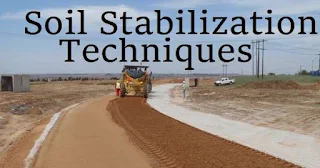Civil Engineering Seminar report on the topic of Soil Stabilization. Download seminar report pdf and ppt on soil stabilization. Successful modern soil stabilization techniques are necessary to assure adequate subgrade stability, especially for weaker and wetter soils.
Soil stabilization is a process that improves the physical properties of soil, such as increasing shear strength, bearing capacity, etc. which can be done by use of controlled compaction or addition of suitable admixtures like cement, lime, and waste materials like fly ash, phosphor gypsum, etc.
Modern Soil Stabilization Techniques Seminar Report
The PDF paper for the seminar report discusses the various techniques which are being used for modern soil stabilization. It is widely recognized that selection between cementitious stabilizing agents cement and lime is based on the Plasticity Index (PI) of the primary soil type being improved. It covered the following topics:
- Stabilization with cement
- Stabilization with bitumen
- Fly ash in soil stabilization
- Stabilization of black cotton soil
- Stabilization of desert sand
- Use of fly ash in concrete
- Retaining walls
- Types of retaining walls
- New techniques in pavements
- Pavement texturing
- Roller compacted concrete and soil-cement pavement
- Prestressed concrete pavement
These new trends are initiatives in the highway improvements. Now highways are well stabilized and more secure. The costs of the construction as well as in maintenance are reduced. These new trends are eco-friendly because the use of fly ash is used as an important material and it is a residual of thermal power stations and in Free State, it is very harmful to the environment. So there is great hope for further improvement in these techniques.


0 comments